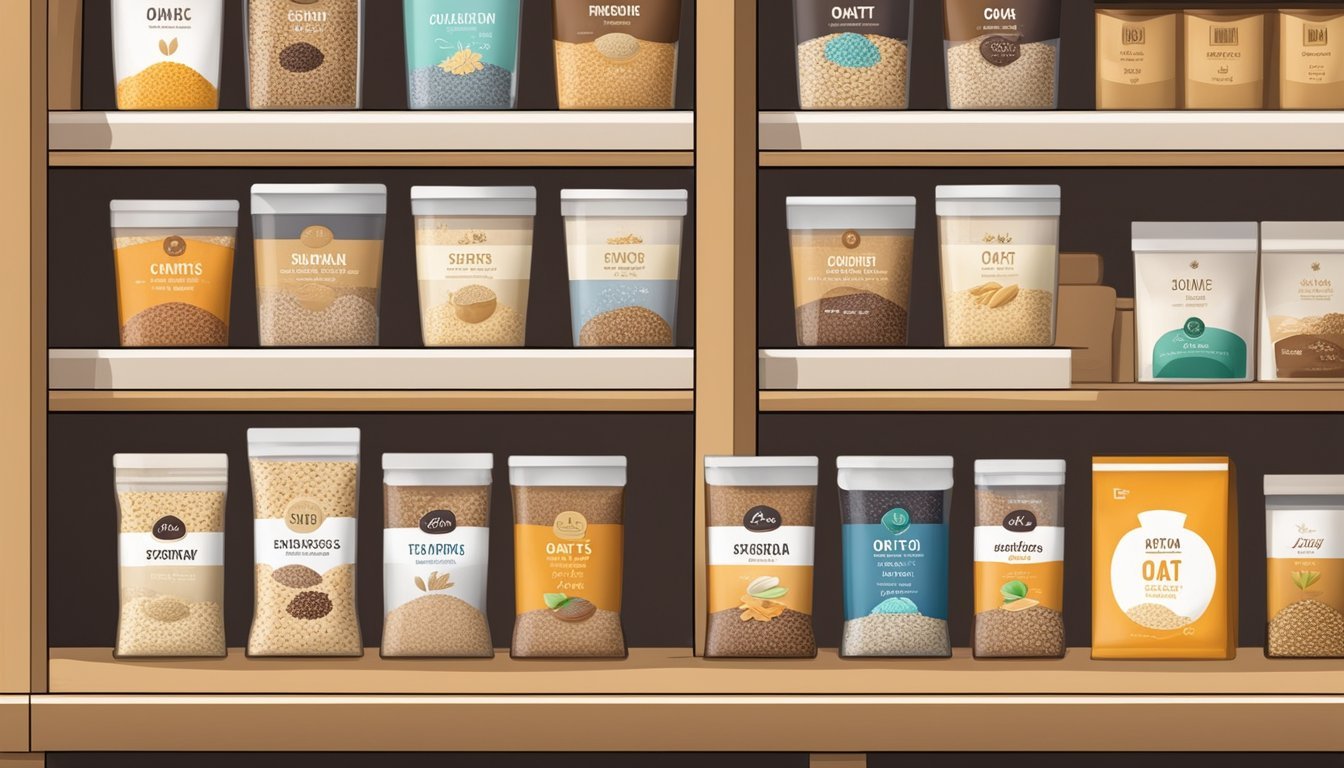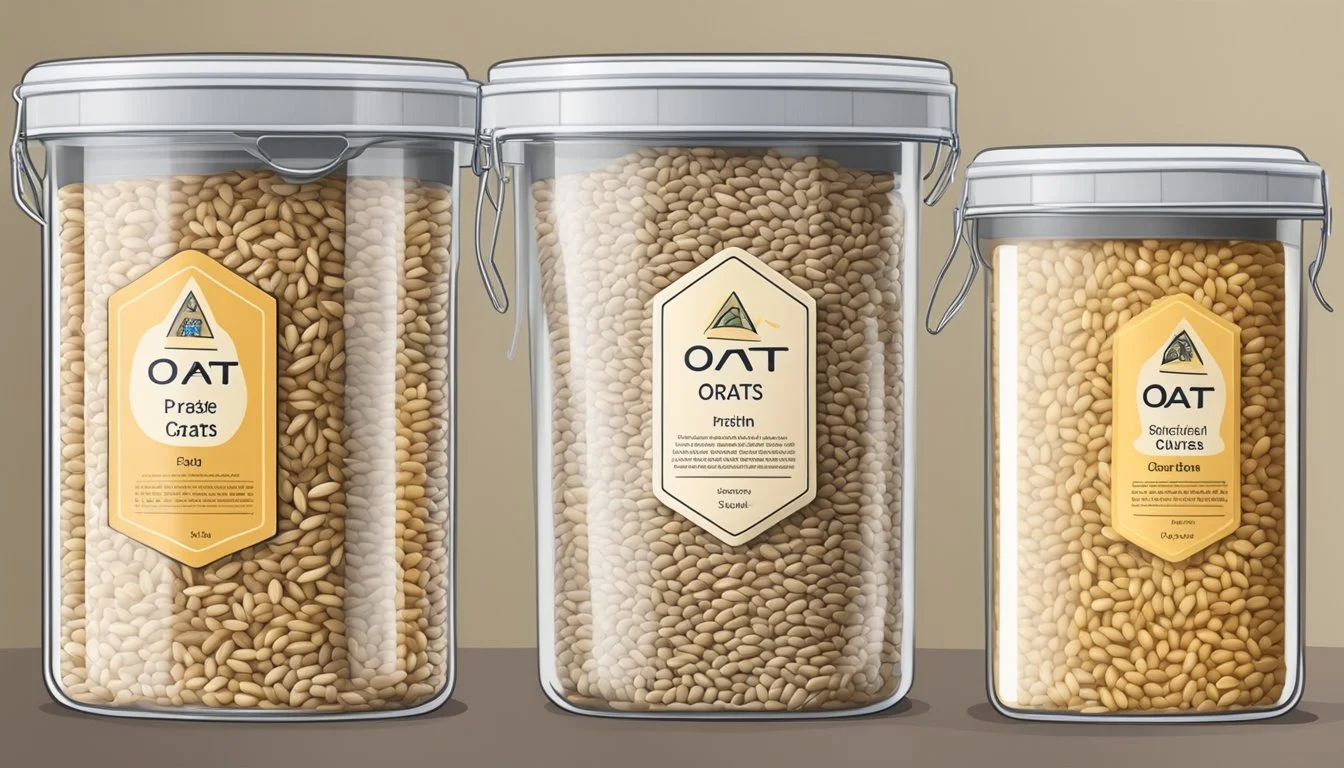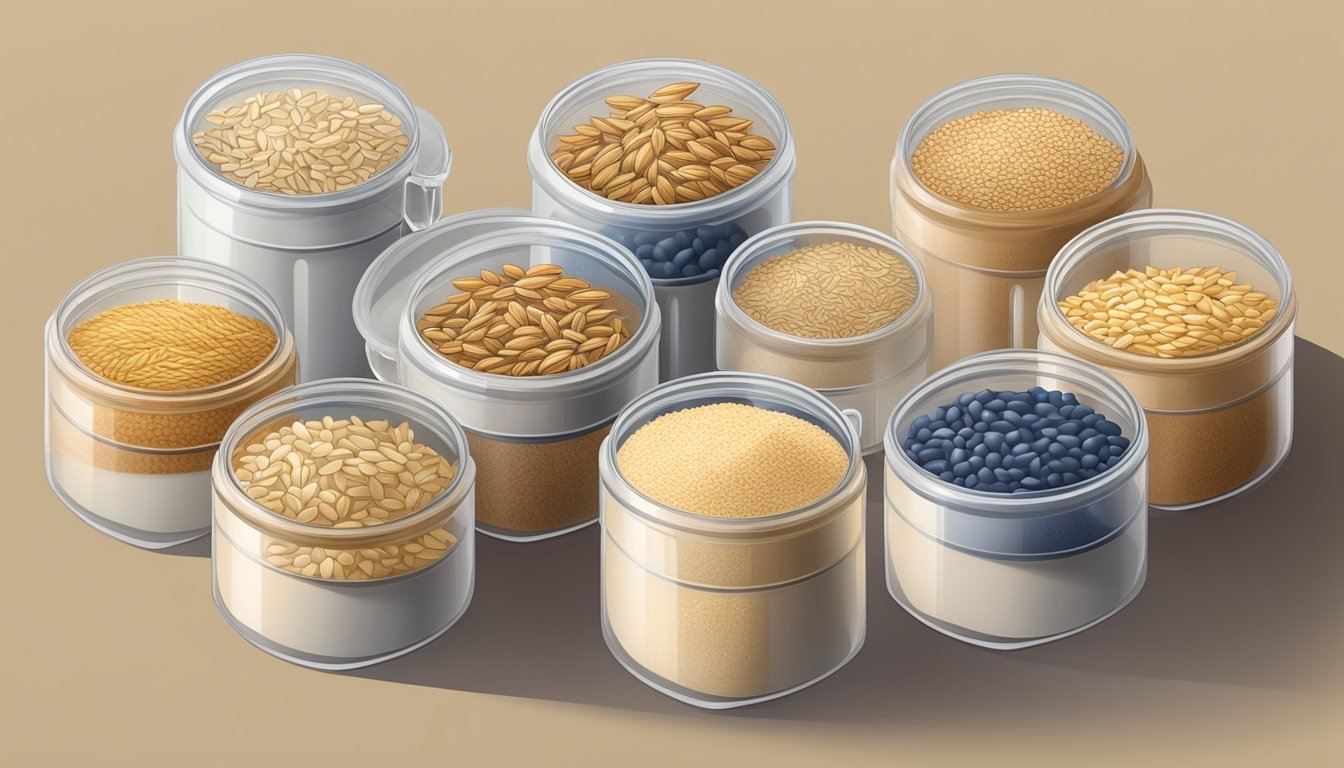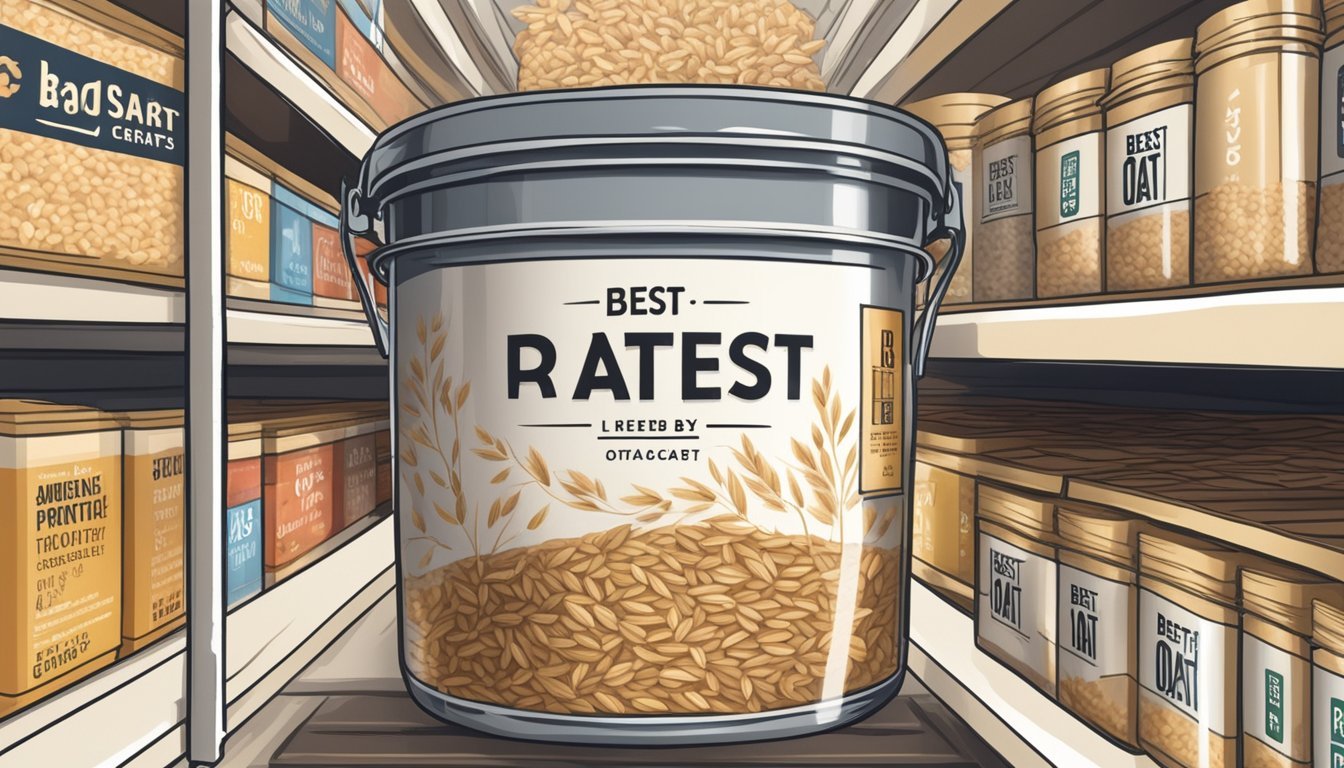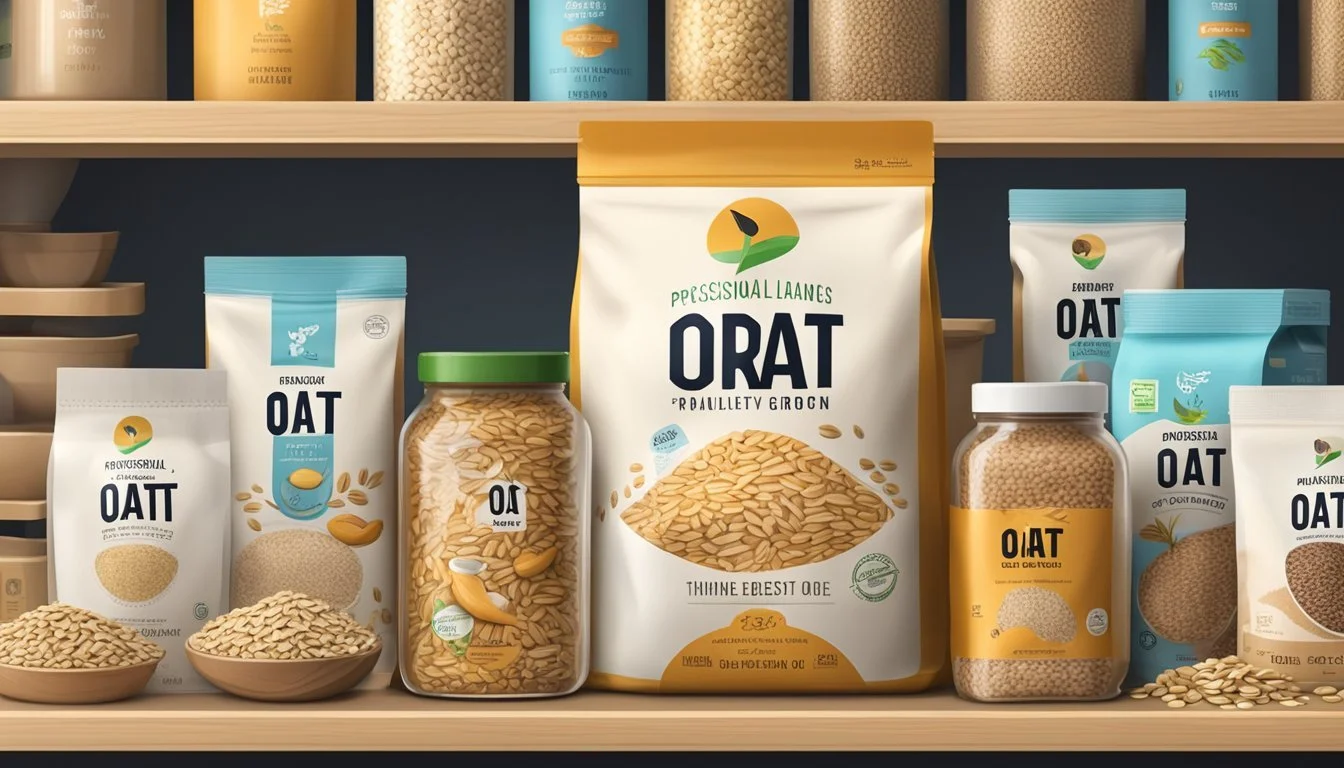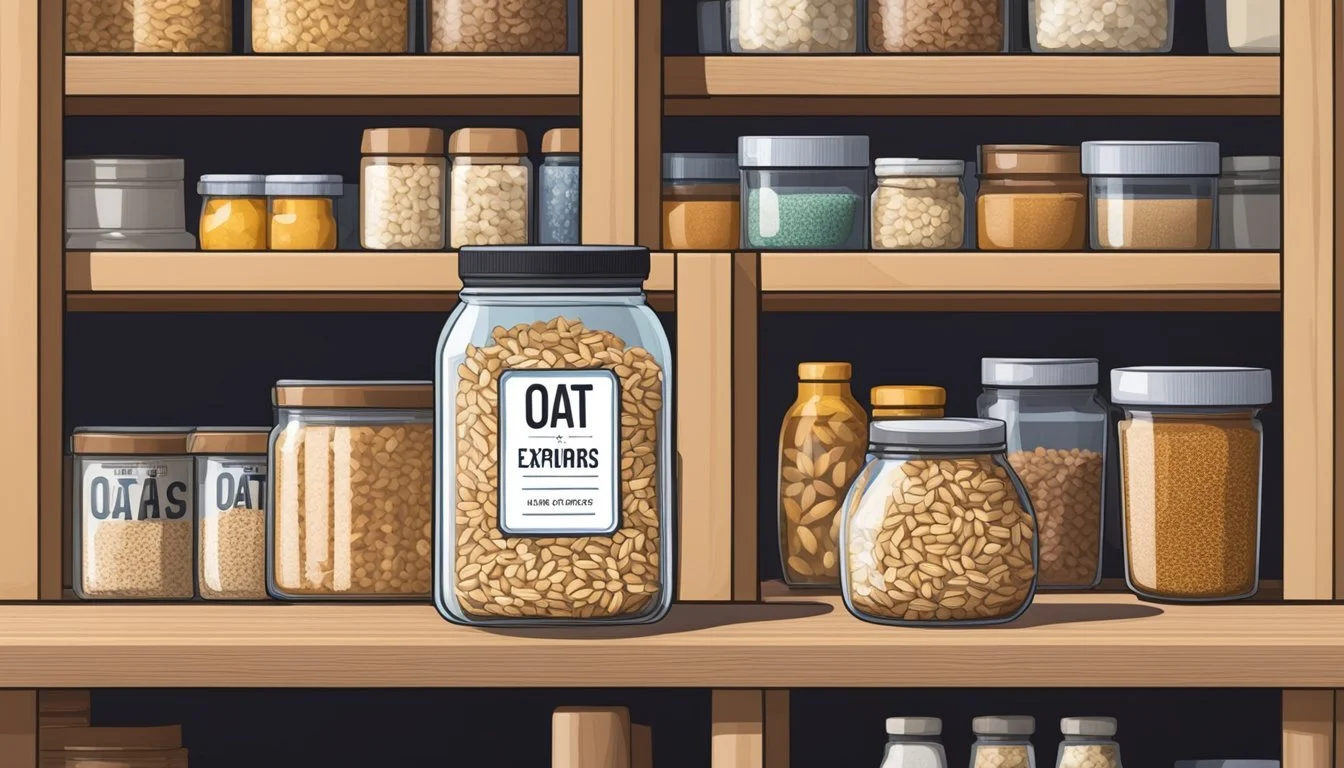How Long Do Oat Groats Last?
Shelf Life and Storage Tips
Oat groats, the most intact and whole form of oats, have a reputation for being a durable staple in pantries around the world. Their shelf life varies depending on storage methods and environment. When stored properly in a cool, dry place, oat groats can last anywhere from 6-12 months without spoiling. Factors such as moisture, heat, and light are the primary adversaries of preserving oat groats, as they can accelerate spoilage.
Understanding the shelf life of oat groats is critical for consumers who aim to maintain the freshness and nutritional value of their oats. As with many natural grain products, the longevity of oat groats is contingent on their environment and the care given to storage. They are less processed than other oat forms, such as instant or rolled oats, meaning they retain more of their natural oils, which can affect their stability over time.
Consumers seeking to optimize the shelf life of their oat groats should consider their storage strategy carefully. Oats should be stored in airtight containers away from direct sources of heat and light to minimize the risk of spoilage. Additionally, understanding the signs of spoilage in oat groats, such as an off smell or change in texture, is essential for ensuring the oats consumed are of the best quality and safe.
Understanding Oat Groats
Oat groats are the most intact and whole form of oats, retaining their nutritional value due to minimal processing. They are a versatile grain that can be used in a variety of dishes for additional health benefits.
Types of Oats
Whole Oat Groats: These are the unflattened kernels that have been cleaned and removed of their inedible hulls. They have a hearty, chewy texture and usually take the longest to cook.
Steel Cut Oats: Also known as Irish oats, these are whole oat groats that have been chopped into pieces. They cook faster than whole groats but still retain much of the grain's nutritional profile.
Rolled Oats: These oats have been steamed and flattened into flakes. They cook more quickly than steel cut oats while still offering a substantial nutritional content.
Quick Oats: Rolled oats that are cut into even smaller pieces to cook rapidly, often used in baking or for quick breakfasts.
Oat Bran: The outer layer of the oat grain that is rich in dietary fiber and beneficial compounds.
Oat Flour: Produced by grinding oat groats or rolled oats into a fine powder, used as an alternative to wheat flour.
Nutritional Value of Oat Groats
Oat groats offer a rich blend of nutrients and are an excellent source of dietary fiber, both soluble and insoluble. They are also packed with proteins, essential vitamins (including B vitamins), minerals like iron and calcium, and are a good source of antioxidants. This array of nutrients contributes to various health benefits, from improving heart health to aiding digestion.
Nutrient Benefit Fiber Supports digestive health Protein Helps in muscle repair and growth Vitamins Crucial for energy metabolism Iron Essential for oxygen transport in blood Calcium Vital for bone health Antioxidants Protects cells from damage
Each type of oat undergoes different levels of processing, but oat groats are considered superior in terms of preserving nutritional value since they are the least processed form of oats.
Shelf Life Fundamentals
Understanding the shelf life of oat groats is pivotal for maintaining their quality and nutritional value. Shelf life refers to the length of time that oats remain fresh and safe to consume.
Factors Affecting Shelf Life
Several factors can impact the shelf life of oat groats:
Storage Conditions: Oats should be kept in a cool, dry, dark place. Exposure to heat, moisture, or light can shorten their shelf life.
Packaging: Properly sealed containers, such as airtight #10 cans or food-grade buckets, can extend shelf life.
Processing: The way oats are processed can affect their longevity. Oat groats, being less processed than rolled or instant oats, generally have a longer shelf life.
A table summarizing these factors:
Factor Ideal Condition Storage Cool, dry, dark Packaging Airtight containers Processing Less processed (oat groats) preserve shelf life
Identifying Spoilage Signs
Oats can spoil, and the signs of spoilage include:
Smell: A rancid or off odor indicates the fats in the oats have degraded.
Texture: If oats have absorbed moisture, they may become slimy or sticky.
Appearance: Look for moldy spots or discoloration as signs of mold and spoilage.
Taste: A stale or off taste can signify that oats are no longer suitable for consumption.
Oat groats can last up to 15 years under optimal conditions, but it's important to check for spoilage signs, even if they are still within their expiration date or 'best by' date.
Proper Storage Techniques
Proper storage techniques can significantly extend the shelf life of oat groats, ensuring they remain fresh and nutritious. The key to longevity is in how they are packaged and the environmental conditions they are stored in.
Packaging
Oat groats should be stored in a storage container that is both airtight and durable. The most effective options include:
Mylar bags: These bags, combined with oxygen absorbers, offer a strong barrier against moisture and air, which are primary causes of spoilage.
Cans and buckets: Food-grade metal cans and plastic buckets with gasket lids seal contents off from air and contaminants.
Glass or ceramic jars: These are ideal for smaller quantities and can be vacuum-sealed for increased protection.
It is crucial that once filled, the containers are sealed properly to prevent exposure to air.
Environmental Conditions
The longevity of stored oats also depends on optimal environmental conditions:
Cool: A cool environment, ideally below 77 degrees Fahrenheit (25 degrees Celsius), helps prevent the degradation of nutrients.
Dry place: Low humidity is essential to avoid moisture buildup that can lead to mold and spoilage.
Dark: Exposure to light can diminish the quality of oat groats, so a pantry or cabinet is preferable.
Consistent temperature: Avoid areas with temperature fluctuations, which can cause condensation inside the container.
For extended longevity, storing oat groats in the fridge or freezer can be particularly effective, with the latter option offering the longest shelf life when coupled with proper packaging. It is important to ensure that the storage area—whether it's a pantry, fridge, or freezer—is consistently maintained to provide optimal preservation conditions.
Preservation Methods
Proper storage is crucial to maintain the flavor, texture, and color of oat groats. Utilizing freezing and oxygen absorbers extends their shelf life significantly.
Freezing Oat Groats
Freezing oat groats is effective in preserving their quality over time. When stored in a freezer at consistent temperatures, oat groats can retain their flavor and texture for up to 5 years. It's important to use air-tight containers to prevent moisture from affecting the groats. To freeze oat groats, one should:
Ensure the freezer is set to 0°F or lower.
Use durable, freezer-safe air-tight containers or bags.
Remove as much air as possible before sealing to prevent freezer burn.
Using Oxygen Absorbers
Incorporating oxygen absorbers is a method to enhance the longevity of oat groats during storage. These absorbers effectively remove oxygen from air-tight containers, which reduces the oxidation and degradation of the groats. By using oxygen absorbers, oat groats can last well over two decades. The steps to store oat groats with oxygen absorbers include:
Placing an appropriate sized oxygen absorber inside a #10 can or air-tight container.
Filling the container with oat groats, leaving some headspace at the top.
Ensuring the lid is sealed tightly after the oxygen absorber is in place.
Through these methods, the preservation of oat groats ensures they are available for use in their best condition for years to come.
Maximizing Oatmeal Quality
Ensuring peak oatmeal quality revolves around proper cooking and preparation techniques, along with strategies to combat flavor loss. These practices help maintain the nutty essence and freshness that is characteristic of high-quality oatmeal.
Cooking and Preparation
When cooking oat groats, they should first be soaked in water to soften them. This can reduce cooking time and improve texture. A standard ratio is 1 part oat groats to 3 parts liquid, which can be water, milk, or a dairy-free alternative. Adding a 1/2 teaspoon of sea salt to the liquid can enhance the natural flavor of the groats.
Soak: Overnight in water
Cook: With 3 parts liquid to 1 part groats
Season: 1/2 teaspoon of sea salt
Once the groats are cooked, they transform into cooked oatmeal that should have a creamy consistency with a hint of nuttiness. For a richer creaminess, one may opt to use milk or even a dairy-free cream alternative instead of water.
Combating Flavor Loss
To retain the natural, nutty flavor and prevent the cooked oatmeal from becoming bland, one can incorporate a few enhancements. Adding dried fruit offers not only a pop of flavor but also an additional texture. Maintaining oatmeal's freshness is paramount; it should be consumed within 5-7 days when stored in the refrigerator or up to 6 months in the freezer.
Add-ins: Incorporate dried fruit for enhanced flavor
Storage: Consume within 5-7 days if refrigerated, or freeze for up to 6 months
By following these suggested practices, oatmeal can be enjoyed with its maximum flavor and texture profile intact.
Addressing Food Safety Concerns
When it comes to oat groats, ensuring food safety involves preventing contamination and adhering to consumption guidelines. These steps are vital for maintaining the safety and quality of oats stored for long periods.
Contamination Prevention
Preventing contamination of oat groats begins with proper storage practices to deter pests and minimize mold growth. Storage containers should be airtight to prevent the intrusion of pantry pests such as weevils and to reduce oxidation, which can degrade the quality of the oats. Additionally, storing oats in a cool, dry place helps prevent moisture accumulation, which is a primary contributor to mold growth.
Pantry Pests: Store oat groats in tightly sealed containers, preferably made of glass or metal with secure lids.
Mold Growth: Inspect groats regularly for any signs of mold, discoloration, or off odors, and discard any affected portions.
Consumption Guidelines
Before consumption, it's essential to examine oat groats for signs of spoilage. Oats past their expiration date may still be safe to eat if they've been stored correctly, but they should be scrutinized closely before use. One should look for:
Visual Check: Ensure there are no visible signs of mold or pests.
Olfactory Check: Smell the oats to detect any unusual or musty odors.
If oat groats show signs of pest infestation or mold, they should not be consumed as this can pose a risk to food safety. Even in the absence of these signs, if there's uncertainty about the quality or safety of the oats, it's prudent to err on the side of caution and not consume them.
Additional Oat-Based Products
Oat groats, the minimally processed form of oats, are just one option among a variety of oat-based products available on the market. Each product varies in shelf life and preparation method.
Oat Variants
Oat groats come in a few variants, each processed differently to cater to consumer needs. Rolled oats, also known as old-fashioned oats, are made by steaming whole oat groats and rolling them to flatten. They retain most of their nutritional value and can be stored for up to 2 years. Moving to a more processed variant, instant oatmeal is pre-cooked, dried, and often comes in flavored variants. It is designed for quick and easy preparation by simply adding hot water or steaming.
Most oat forms, including steel-cut oats, which are oat groats cut into smaller pieces, offer a hearty texture and a nutty flavor. When stored properly, they also have a long shelf life. Across these oat types, flavoring additives typically don't significantly alter their shelf life.
Commercially Processed Oats
Commercially processed oats, such as those from brands like Quaker, are commonly found in two forms: quick oats and instant oats. Quick oats are oat groats that have been further processed by rolling more thinly and steaming longer, enabling them to cook more rapidly. They can be stored and consumed for months after their "best by" date, typically up to a year.
Instant oats are the most processed form; they are pre-cooked, dried, and often come with flavorings and salts. This convenience comes at the cost of stability, as they tend to have a shorter shelf life than their less processed counterparts, usually around 12 months. Yet, like other oat products, they last well beyond the expiration date if they remain unopened and are stored in a cool, dry place.
Both types of oats, when packaged and stored correctly, can last for a considerable duration, often remaining suitable for consumption well past their indicated "best by" date due to their dry and stable nature.
Creative Uses for Oat Groats
Oat groats, the least processed form of oats, retain most of their nutritional content and provide a versatile base for both savory and sweet culinary creations. These whole grains are a powerhouse of health benefits, offering a hearty texture that can add depth to various dishes.
Savory Dishes
Whole oat groats can be a delightful substitute for rice in pilafs and risottos, giving the dishes a chewy texture and a nutty flavor. For a wholesome meal, they can be added to stews or used as a robust base for veggie burgers, blending seamlessly with spices and vegetables for a nutritious twist.
Veggie Burgers: Mix cooked groats with mashed beans, spices, and chopped vegetables. Form patties and grill or bake.
Sweet Treats and Snacks
In the realm of desserts and snacks, oat groats can be ground into flour for baking muffins, pancakes, and quick breads. Their natural sweetness enhances the flavor profile of baked goods. They can also be incorporated into homemade granola or energy bars for a satisfying, healthy snack on the go.
Granola Bars: Combine groats with honey, nuts, and dried fruits, press into a pan, and bake until set.
Understanding Oats and Their Impact
Oats are a powerhouse of nutrition and have far-reaching benefits for both human health and the environment. This section explores the dietary advantages they offer and assesses their ecological footprint.
Health Benefits of Oats
Oats are rich in dietary fiber, particularly beta-glucan, which has been linked to lowering cholesterol levels and reducing heart disease risk. They are also a good source of protein, which is essential for muscle repair and growth. The vitamins found in oats, such as B vitamins, contribute to energy metabolism and nervous system health. Additionally, oats provide important minerals like magnesium and zinc.
The presence of antioxidants in oats, including avenanthramides, helps combat inflammation and may contribute to better cardiovascular health. The nutritional value of oats is further enhanced by their low glycemic index, which aids in blood sugar control, making them particularly beneficial for individuals with diabetes.
Environmental Impact of Oats
Oats are considered an eco-friendly crop due to their lower need for water and pesticides compared to some other grains. This trait contributes to their sustainability and a smaller environmental footprint. They are typically grown in rotation with other crops, which helps to maintain soil health and reduce the impact of agricultural practices.
Cultivation of oats often utilizes less fertilizer, which in turn can lead to fewer run-offs into water systems, aiding in the protection of aquatic ecosystems. Thus, their production supports environmental sustainability and can be part of a strategy aiming for more sustainable agricultural systems.
Conclusion
Oat groats, the unprocessed hulled kernels of whole oats, have a notable shelf life due to their intact bran and germ. When stored under optimal conditions—cool, dry, and dark environments—oat groats can last up to 25+ years. It is crucial they are kept in airtight containers to prevent moisture and pest infestations.
The longevity of oat groats is also contingent upon their treatment before storage. Exposure to heat, light, or moisture can significantly reduce their shelf life. If consumers detect any signs of spoilage, such as a rancid smell, change in color, or presence of mold, the oat groats should be discarded.
Here is a simple guideline for shelf life:
Unopened: Up to 25+ years in ideal conditions.
Opened: Best consumed within 12 months for optimal freshness, though they may last longer under perfect storage conditions.
Regular checks are recommended to ensure oat groats maintain quality over time. For long-term preparedness, individuals often incorporate oxygen absorbers in storage containers, which can further extend their shelf life. It's beneficial to consider rotation practices to continuously utilize and replenish supplies.
Consumers can enjoy the nutritional benefits of oat groats for years when they are cautious about the storage method. By following these guidelines, oat groats can be a reliable and enduring part of one's dietary plans.


